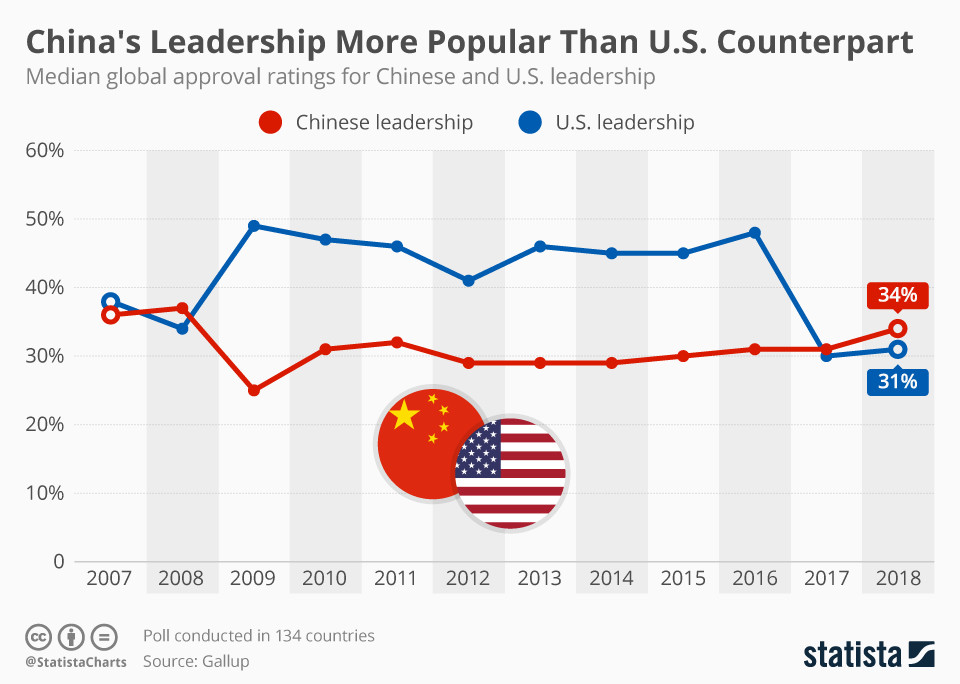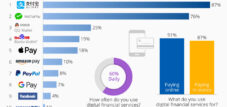Since 2017, it has been a fact: The Chinese leadership enjoys higher average approval ratings worldwide than its American counterpart. While the gap was very small in 2017, it widened to three percentage points last year, as reported by Gallup .
The last time the US was so unpopular worldwide was during the 2008 financial crisis. But even then, approval ratings for the US leadership were higher than those of the current Trump administration, which took office in early 2017. China has earned high marks in Africa, where it has invested heavily over the past decade. Its approval ratings in its home region were on par with the global average of 34 percent and somewhat lower in Europe and the Americas.
However, Mexican citizens, whose country has come into conflict with the Trump administration over the NAFTA trade agreement and the construction of a border wall, also rated China significantly higher last year, as did citizens of Venezuela.
It's been a fact since 2017: The Chinese leadership has higher median approval ratings around the world than its US counterpart. While the gap was minuscule in 2017, it widened in the previous year to three percentage points, as reported by Gallup .
The last time the US was this unpopular around the world was during the financial crisis in 2008. But even then, the US leadership's approval rating was higher than any of those of the current Trump cabinet, which assumed office in early 2017. China has earned high ratings in Africa, where the country has invested large sums in the past decade. Approval ratings in its home region were on par with the median global result of 34 percent and were somewhat lower in Europe and the Americas.
Yet, Mexican citizens, whose country has been at loggerheads with the Trump administration over trade deal NAFTA and the construction of a border wall, also rated China significantly higher in the past year, as did citizens of Venezuela.


